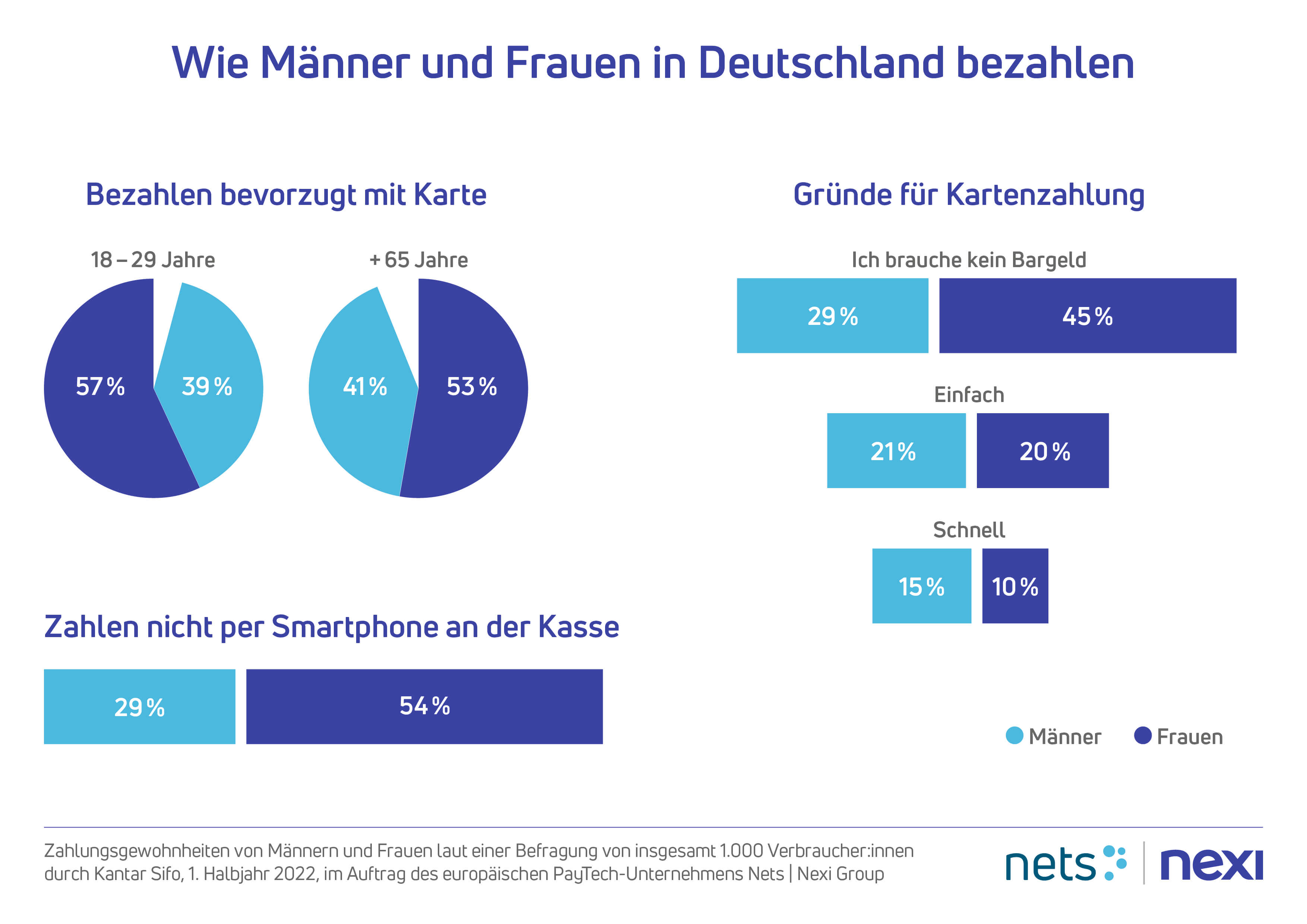
- Kantar Sifo, on behalf of the PayTech company Nets/Nexi Group, surveyed 1,000 consumers regarding their payment habits
- 57 % of young women prefer to pay with cards, while only 39% of young men do so
- Reasons for cash usage: Women prefer it for better control over expenses, while men tend to stick to it out of habit
- Consensus on the idea of a cashless society: Approximately one-third of respondents can envision a society without cash.
Eschborn, January 17, 2023. When it comes to paying at the checkout, men and women have different preferences, as indicated by the latest payment survey of 1,000 consumers conducted by Kantar Sifo on behalf of the payment service provider Nets Group, together with Nexi Group, one of the leading PayTech companies in Europe.
While young men in the age group of 18 to 29 years indicated a preference for card payments in stores at only 39 percent, among women of the same age group, it was 57 percent. As age increases, this ratio reverses: Among those over 65 years old, 53 percent of men prefer to pay with cards, while only 41 percent of women do so.
"The analysis shows that traditional stereotypes do not reflect reality. For those offering products or services targeting men and women, it's essential to understand the different preferences and habits when it comes to payment and offer a diverse range of payment options," said Carola Wahl, CEO of the Concardis Group and Chief Regional Officer DACH, responsible for the Germany business of the Nexi Group.
No need to carry cash vs. speed at the checkout
When asked about the reasons for preferring card payments, men and women also provided different responses. While on average, both genders considered not having to carry cash as the most important reason out of the nine options available, 45 percent of women cited it as the primary reason, compared to only 29 percent of men. For younger men, speed at the checkout was also an important factor in card payments.
Similarly, the reasons for continuing to use cash varied. 55 percent of women aged 50 to 64 stated that they used cash for better control over expenses. In contrast, only 26 percent of men in this age group mentioned this reason. Habit played a larger role for men – 28 percent stated that they paid with cash because of habit. This was the reason for only 13 percent of women in the same age group.

Both men and women agree: Contactless payment is convenient
Both genders agree on the level of convenience they find in contactless payments: 55 percent of all surveyed men and 52 percent of women stated that they appreciate or highly appreciate Tap and Go payments.
More women (75 percent) participate in one or more loyalty programs compared to men (65 percent). One reason could be that men desire a different system: 73 percent of men consider it valuable or highly valuable if loyalty points are registered directly when making a purchase with a payment card or smartphone. This was stated by 62 percent of women.
"Not only payment methods but also customer retention measures must be tailored to the specific target audience," Wahl commented. Apps with integrated payment and bonus systems can strengthen loyalty to the company or brand for both men and women alike as a loyalty program.
Younger men are more inclined to use their smartphones for payment.
Significant differences were observed regarding smartphone payments: While in the youngest age group surveyed, between 18 and 29 years old, 54 percent of women stated that they do not pay with their smartphones, only 29 percent of male respondents reported the same. However, among the latter group, those who did pay with their smartphones mainly used Apple Pay or Google Pay – 46 percent of men aged 18 to 29 paid using one of these two payment services.
Both genders share similar views on whether our society could do without cash: 34 percent of men and 32 percent of women say yes, accounting for approximately one-third of all respondents.